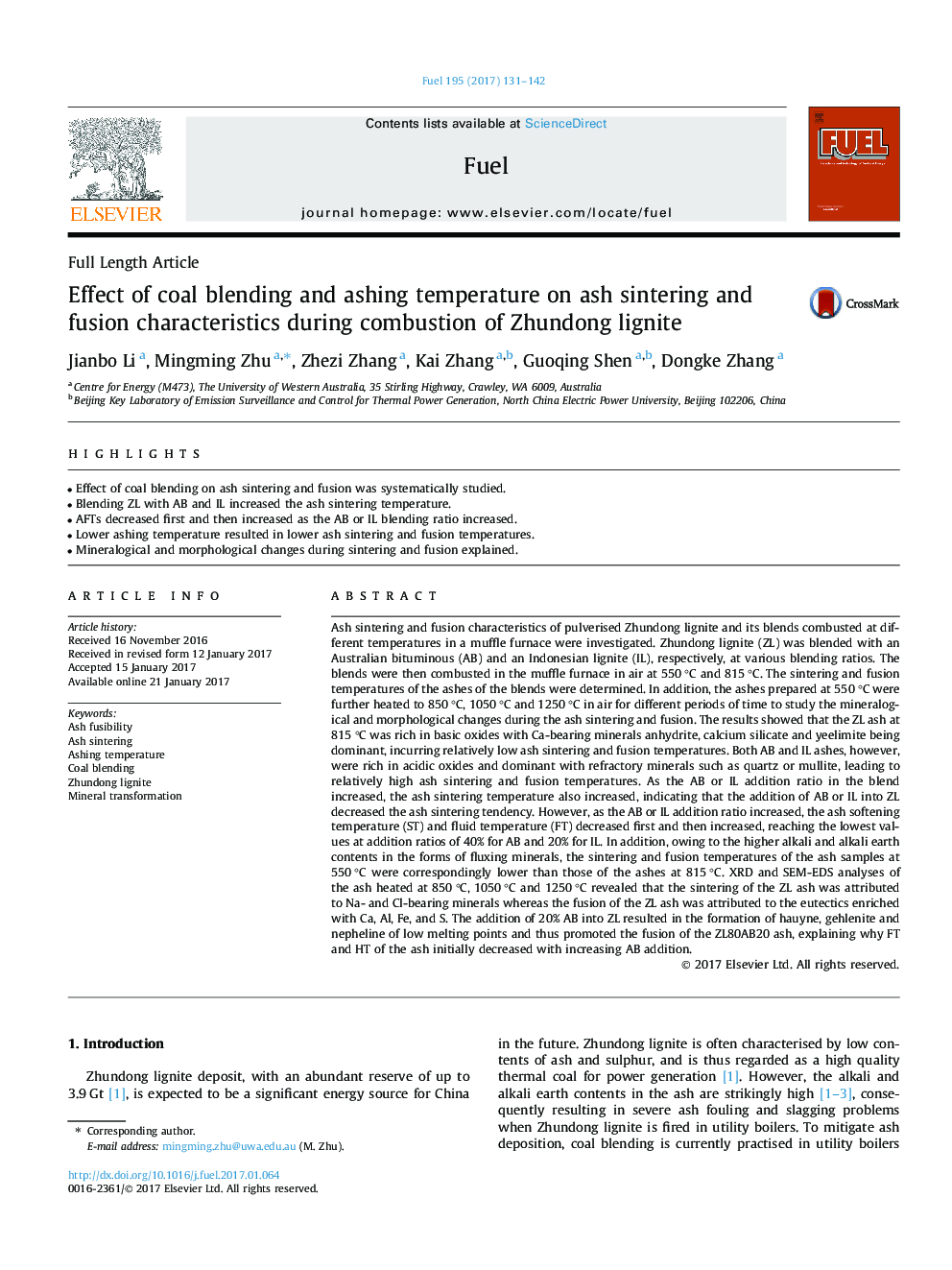| کد مقاله | کد نشریه | سال انتشار | مقاله انگلیسی | نسخه تمام متن |
|---|---|---|---|---|
| 6475355 | 1424969 | 2017 | 12 صفحه PDF | دانلود رایگان |

- Effect of coal blending on ash sintering and fusion was systematically studied.
- Blending ZL with AB and IL increased the ash sintering temperature.
- AFTs decreased first and then increased as the AB or IL blending ratio increased.
- Lower ashing temperature resulted in lower ash sintering and fusion temperatures.
- Mineralogical and morphological changes during sintering and fusion explained.
Ash sintering and fusion characteristics of pulverised Zhundong lignite and its blends combusted at different temperatures in a muffle furnace were investigated. Zhundong lignite (ZL) was blended with an Australian bituminous (AB) and an Indonesian lignite (IL), respectively, at various blending ratios. The blends were then combusted in the muffle furnace in air at 550 °C and 815 °C. The sintering and fusion temperatures of the ashes of the blends were determined. In addition, the ashes prepared at 550 °C were further heated to 850 °C, 1050 °C and 1250 °C in air for different periods of time to study the mineralogical and morphological changes during the ash sintering and fusion. The results showed that the ZL ash at 815 °C was rich in basic oxides with Ca-bearing minerals anhydrite, calcium silicate and yeelimite being dominant, incurring relatively low ash sintering and fusion temperatures. Both AB and IL ashes, however, were rich in acidic oxides and dominant with refractory minerals such as quartz or mullite, leading to relatively high ash sintering and fusion temperatures. As the AB or IL addition ratio in the blend increased, the ash sintering temperature also increased, indicating that the addition of AB or IL into ZL decreased the ash sintering tendency. However, as the AB or IL addition ratio increased, the ash softening temperature (ST) and fluid temperature (FT) decreased first and then increased, reaching the lowest values at addition ratios of 40% for AB and 20% for IL. In addition, owing to the higher alkali and alkali earth contents in the forms of fluxing minerals, the sintering and fusion temperatures of the ash samples at 550 °C were correspondingly lower than those of the ashes at 815 °C. XRD and SEM-EDS analyses of the ash heated at 850 °C, 1050 °C and 1250 °C revealed that the sintering of the ZL ash was attributed to Na- and Cl-bearing minerals whereas the fusion of the ZL ash was attributed to the eutectics enriched with Ca, Al, Fe, and S. The addition of 20% AB into ZL resulted in the formation of hauyne, gehlenite and nepheline of low melting points and thus promoted the fusion of the ZL80AB20 ash, explaining why FT and HT of the ash initially decreased with increasing AB addition.
Journal: Fuel - Volume 195, 1 May 2017, Pages 131-142